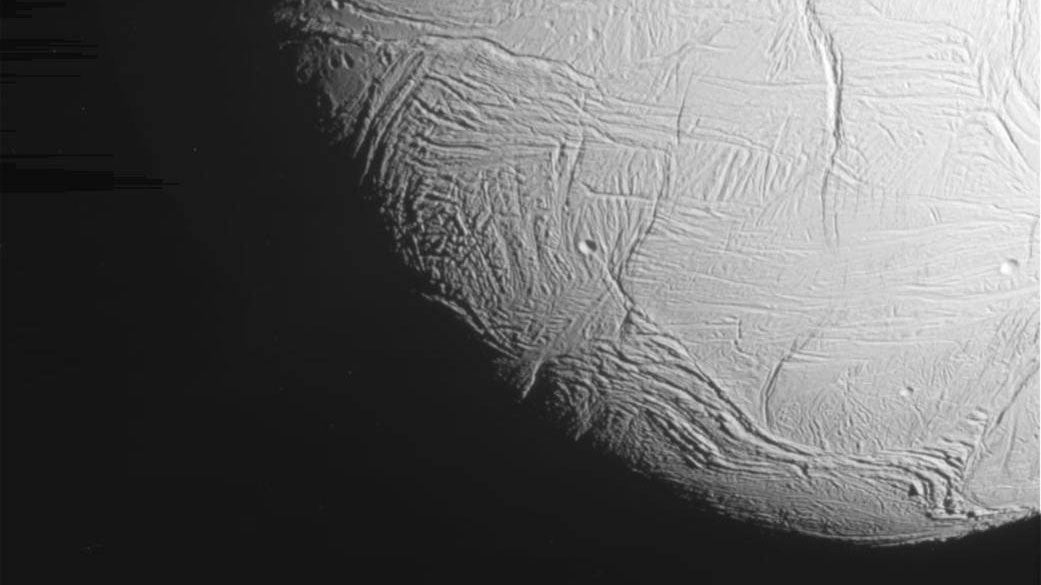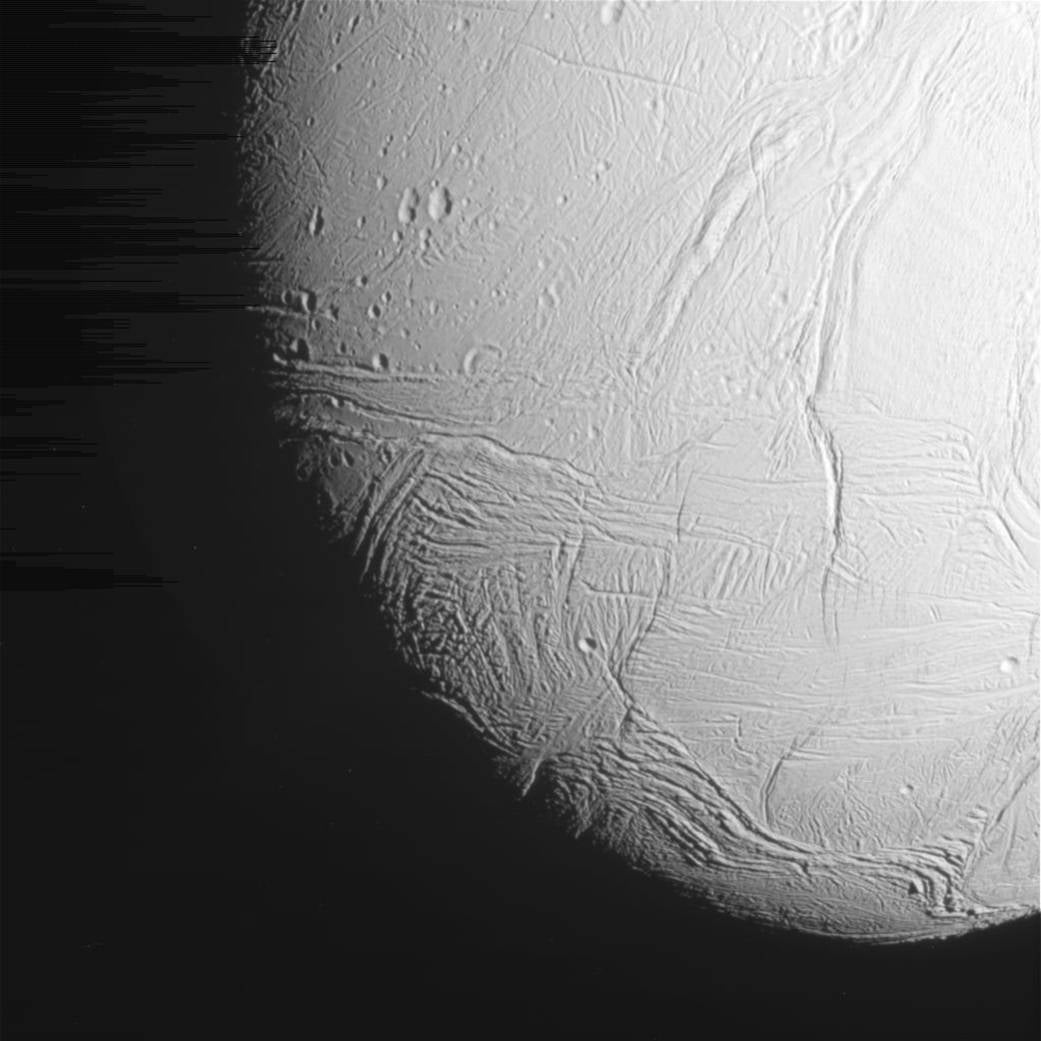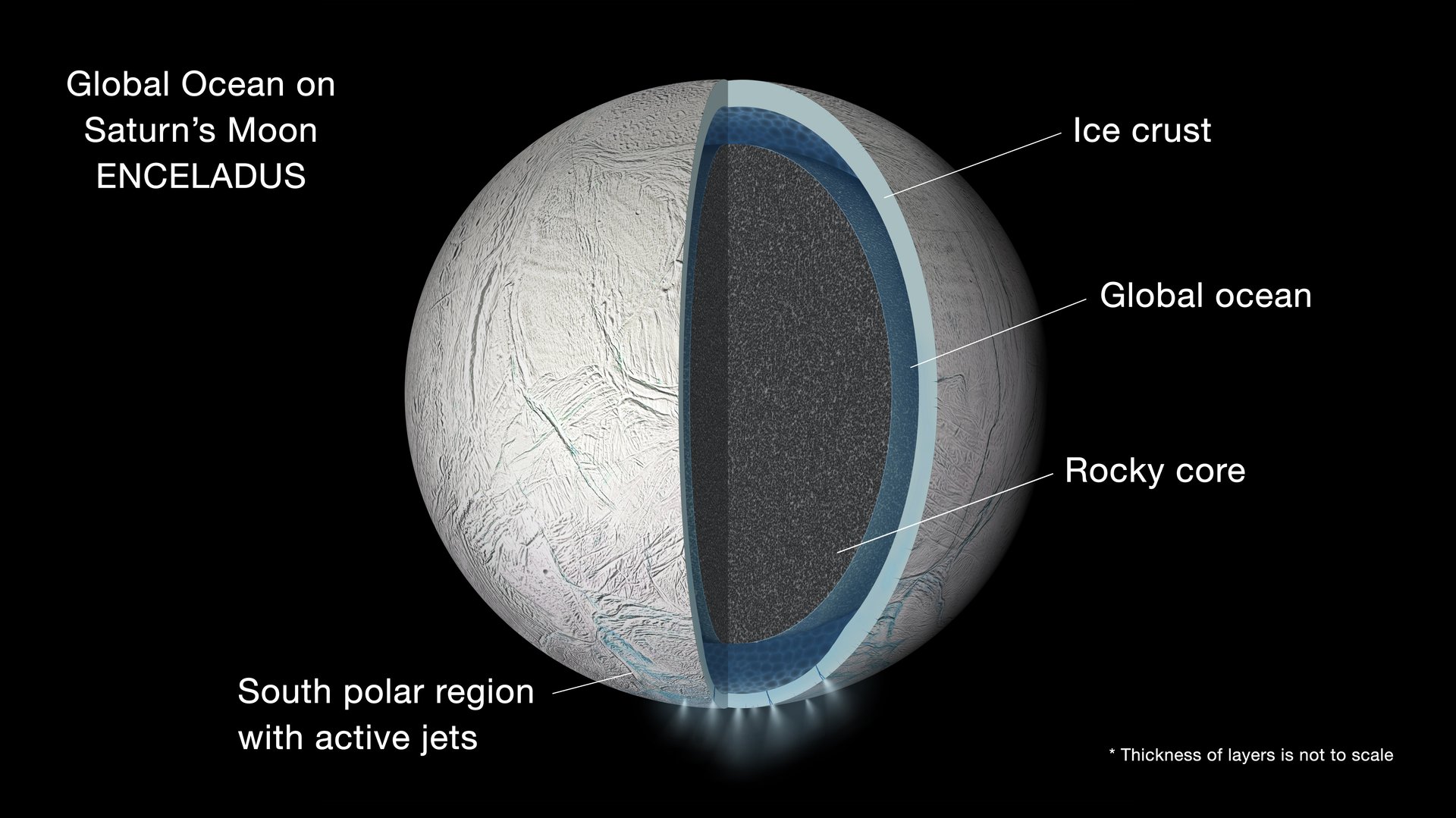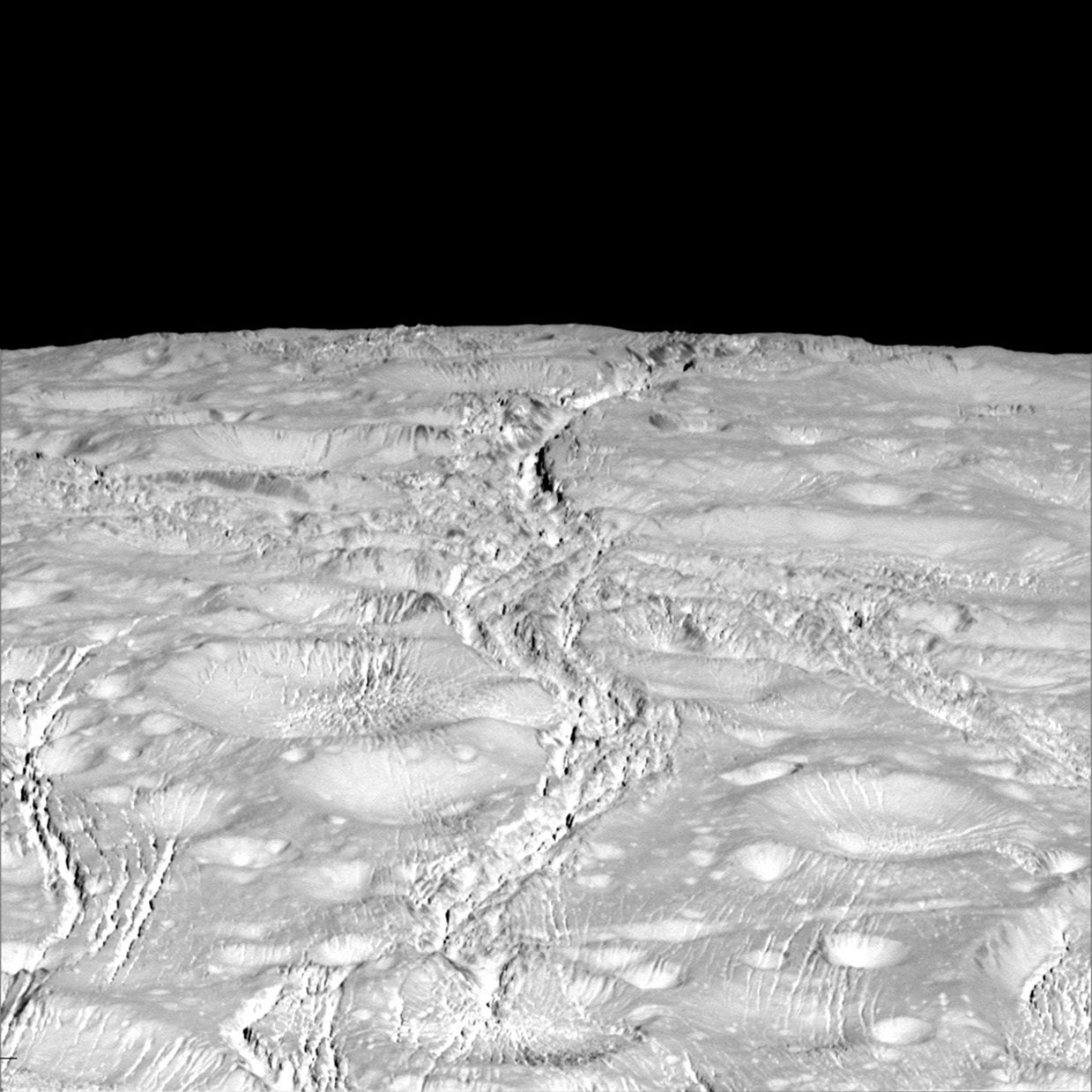NASA just released a close-up of Saturn’s moon Enceladus, taken 30 miles above the surface
The Cassini spacecraft has beamed back the closest image taken yet of Saturn’s moon Enceladus, from above its south pole.


The Cassini spacecraft has beamed back the closest image taken yet of Saturn’s moon Enceladus, from above its south pole.
On Oct. 28, Cassini dived through the moon’s icy plume, snapping the following unprocessed photo from just 30 miles above Enceladus’s surface. Cassini—a joint project from NASA, the European Space Agency, and the Italian Space Agency—was launched in 1997 and first entered orbit around Saturn in 2004.

The spacecraft has flown closer to Enceladus’s surface in 2008, from an altitude of 16 miles (26 km), but has never dived down so close through its icy plume. The spacecraft will continue to transmit data from the Enceladus flyby in the coming days, and NASA expects Cassini’s final encounter to take place Dec. 19, when the craft will measure the amount of heat from the moon’s interior from an altitude of 3,106 miles.

In September, Cassini helped scientists confirm a global ocean in the moon’s icy crust after analyzing seven years worth of images. Researchers also believe there’s evidence of hydrothermal activity, which could potentially support simple life, according to NASA. The spacecraft has also detected water vapor, methane, nitrogen, ammonia, and other molecules associated with life, but the close encounter could help it find more complex and heavier organic molecules near Enceladus’s surface.
On Oct. 14, Cassini sent back the best quality image taken so far of Enceladus’s north pole, revealing highly detailed cracks through impact craters, which are more sparse on the south pole.
